A few days ago I saw on Facebook a post by a friend, Sara Giulia Tommasi, who was mentioning a very special place.
Between August 13th and 16th, the Ancient Fiera delle Grazie was held in Curtatone, in the province of Mantua, which hosted the 46th edition of the National Meeting of the Madonnari that takes place every year.
Maybe for a foreigner, this term is not immediately intuitive: the Madonnaro is a street artist who reproduces holy images, mainly the Virgin Mary on the pavement and who lives on the tips offered by the public to show their appreciation of this ancient art.
The figure of the Madonnaro is present all over Europe since the sixteenth century but due to the fact that these images are made with colored chalks and are destined to disappear with the first rain or under the soles of passers-by, we have only very recent visual evidence of it.
We know that in the United Kingdom by 1890 it was estimated that more than 500 artists were making a full-time living from pavement art in London alone.
The Italian Madonnari were itinerant artists, who reached the cities to work on the huge cathedrals. Once the construction was over they had to find an alternative way to earn their wages and they started reproducing the paintings hanging in the churches they’ve been working in on the sidewalks, moving from one city to another, following the most popular fairs calendar.
The sanctuary of the Beata Vergine delle Grazie is a church of Lombard Gothic style (the origins of the church are dated as early as 1200)dedicated to the Blessed Virgin Mary in the small fraction of Grazie of the municipality of Curtatone, 9 km from Mantua, not far from the marsh waters of the Mincio river.
The devotion of the people of this areas was a kind of shield against heavy labor, hardships, diseases, superstitions, fears, and the plague, which was the number one enemy of the population living on the plains.
Towards the end of the 14th century Francesco Gonzaga, lord of Mantua, right over an existing altar with the image of the Madonna with Child, to which the fishermen of the lake and the peasants were particularly devout, decided to built a temple dedicated to the Madonna that according to him, had stopped the plague epidemic.
After the construction, pilgrimages of common people and nobility began towards the Basilica and as a consequence a substantial amount of donations flowed into this place, contributing towards making it richer and more important.
In 1521 an ample front porch of 52 arches was built around the square to shelter the merchants since on the 11th of August 1425, Marquis Federico Gonzaga had moved the “Porto fair” to the Basilic square, initiating the tradition of the August fair in Grazie.
The gothic interior as a single aisle with a cross-vaulted ceiling decorated with floral frescoes that makes it look more like a palace than a church. As you enter you are struck by the richness of the walls and its almost pagan appearance: a stuffed crocodile, probably placed in the Sanctuary in the fifteenth or sixteenth century, welcomes the visitors.
In ancient times dragons, crocodiles or snakes were associated with the devil and suspending these animals in the center of the churches (there are other examples in Italy of this kind of symbolic exposure) meant to warn people against satanic temptation by showing his earthly incarnation.
The median band of the walls of the nave are lined in full length by a wooden deck on whose walls, columns, corners there are decorations composed of rows of anatomical models in wax, ex-voto representing hearts, hands, eyes, breasts, ears, buboes pistils that give it a truly unique appearance. In the large niches, instead, dozens of decidedly theatrical papier-mâché figures recall episodes of miraculous rescues.
The nave is lined with wood on whose walls, columns and corners there are decorations composed of rows of anatomical models in wax, ex-voto representing hearts, hands, eyes, breasts, ears, pestiferous buboes that give it a truly unique appearance in its kind. In the large niches, instead, we find dozens of theatrical papier-mâché figures that recall episodes of miraculous rescues.
The pavement of the large square in front of the church, from the evening of August 14th, fills up with dozens of drawings made with colored chalk: the madonnari begin their work that will continue until the evening of August 15th. If you arrive in the morning you have the unique chance to follow their slow and meticulous work, under the scorching sun: Madonna faces, eyes, hands, saints, start materializing on the cement, with an extraordinary quality design.
It’s absolutely amazing what these talented street artists can make with such a humble material like colored chalk.
Just next to the Church there is the Mincio Park and you can take a ride on small boats among thousands of lotus flowers, suddenly finding yourself in what we can call a “Lombard Asian paradise”.
Remember though that the lotus flowers open in the morning and that the flowering takes place between July and August, so this is the perfect moment to enjoy a magical moment.
Returning to the square the drawings will be completed and you find yourself in front of an ephemeral and marvelous show: the pavement has been transformed into a theater of saints, skies, religious symbols so beautiful to look alive.
If this is not enough to convince you the Fair is full of stands where you can taste the delicacies of the area, such as the famous cotechino sandwich, baccalà, pike with polenta and other treats.
Believe me, it’s really is worth the trip.
I would like to thank Sara Giulia for the suggestion and the photos that she kindly sent us and I suggest you visit her interesting blog regarding cooking and recipes based on a person’s blood type.
We would also like to thank Franco Lanfredi for the photo from high above the square during the festivity.
Betti
http://www.ricettedietagrupposanguigno.com/
If you planning on visiting the town of Curatone here is the best way to get there
[socialWarfare]

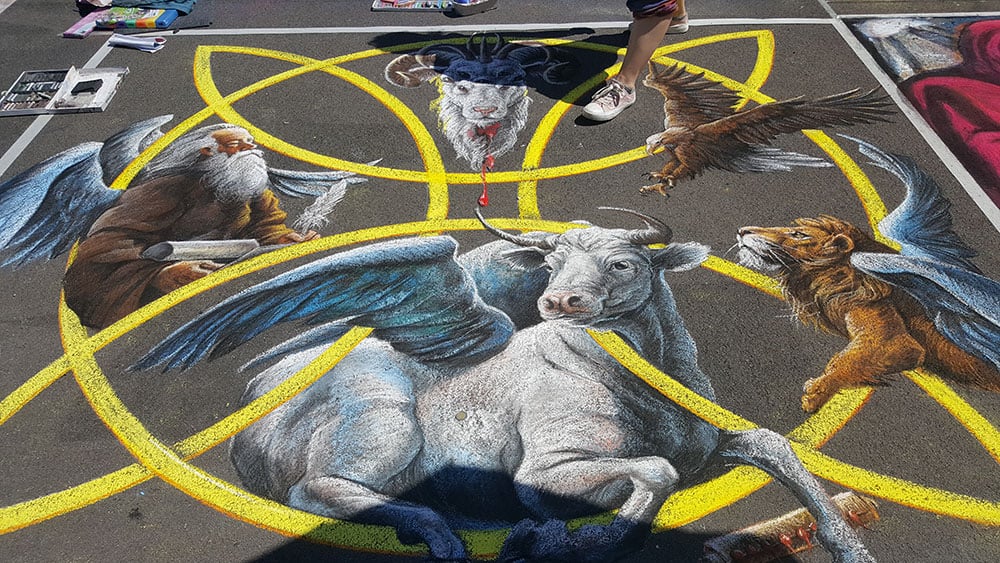
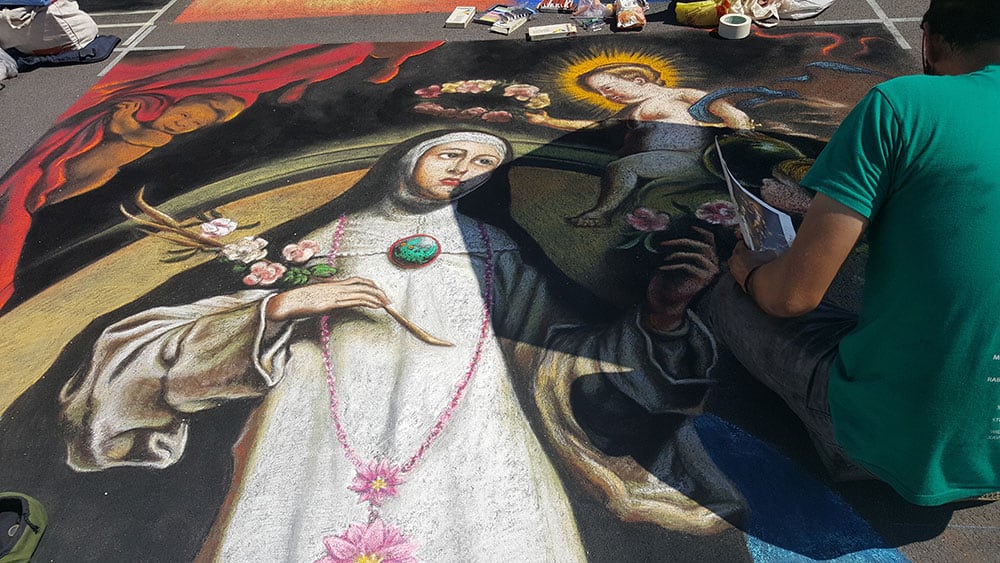
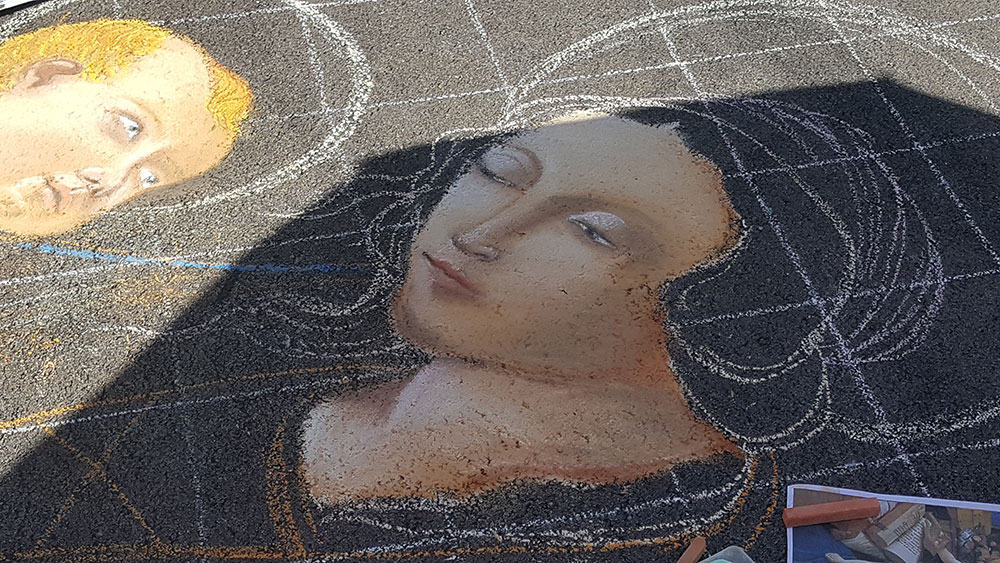
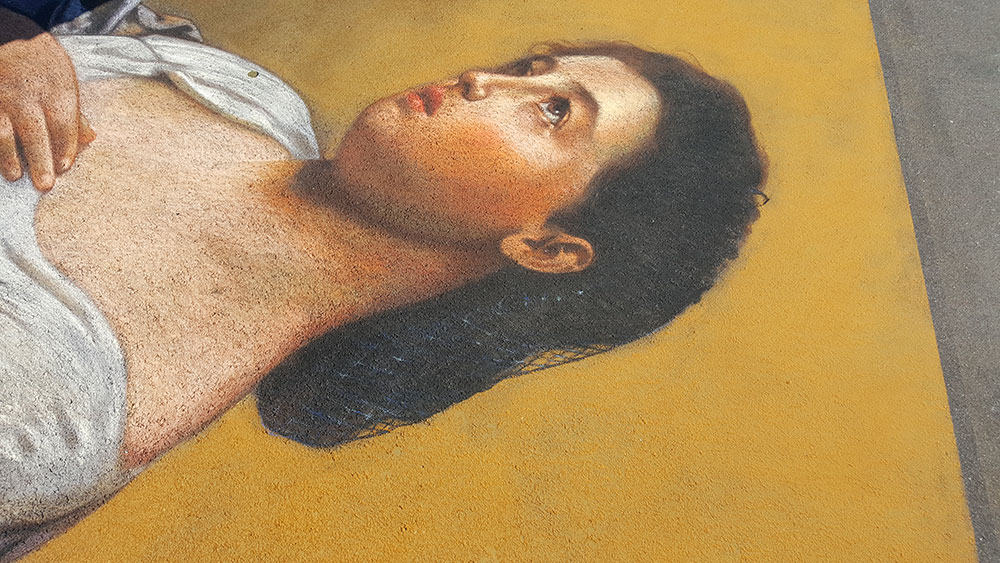
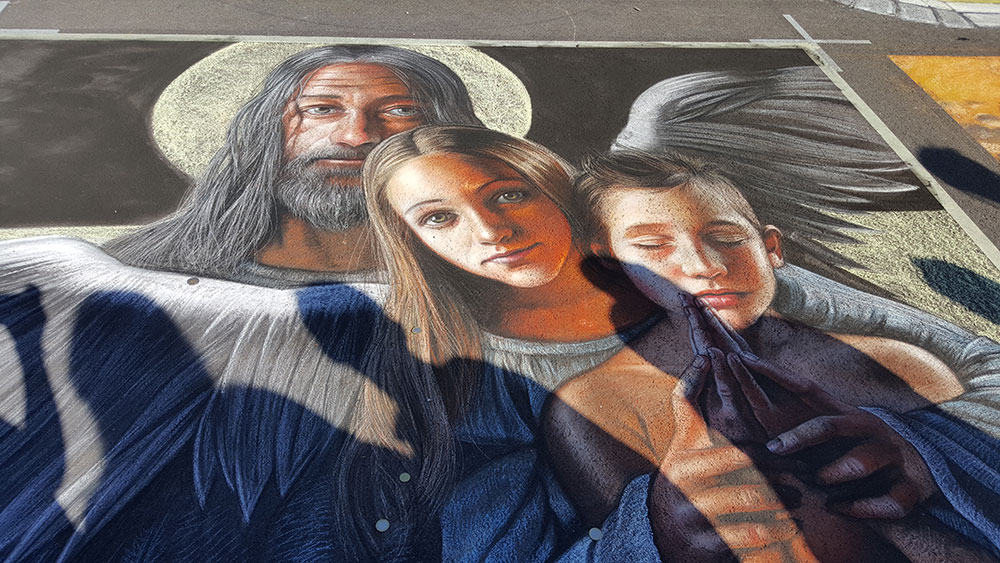
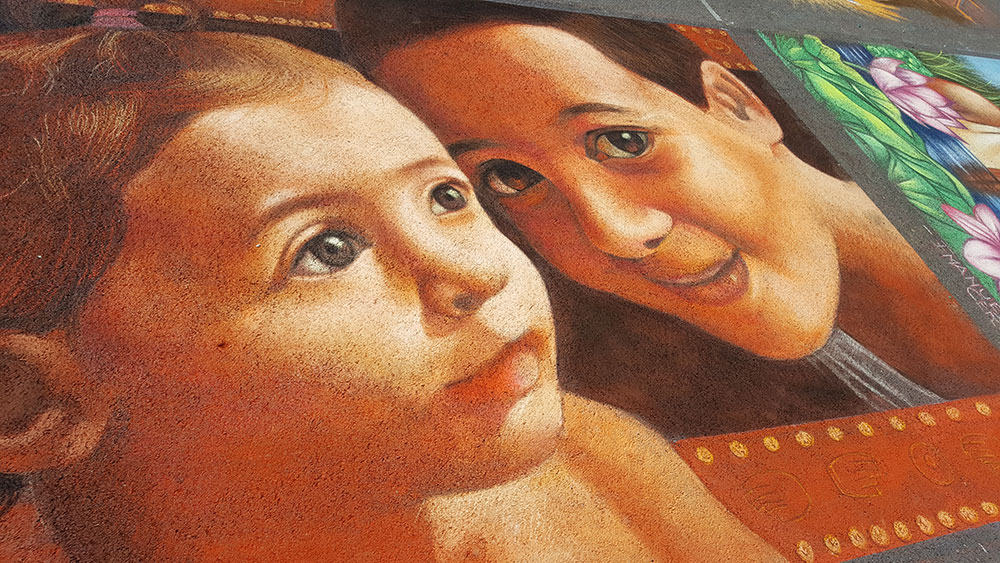
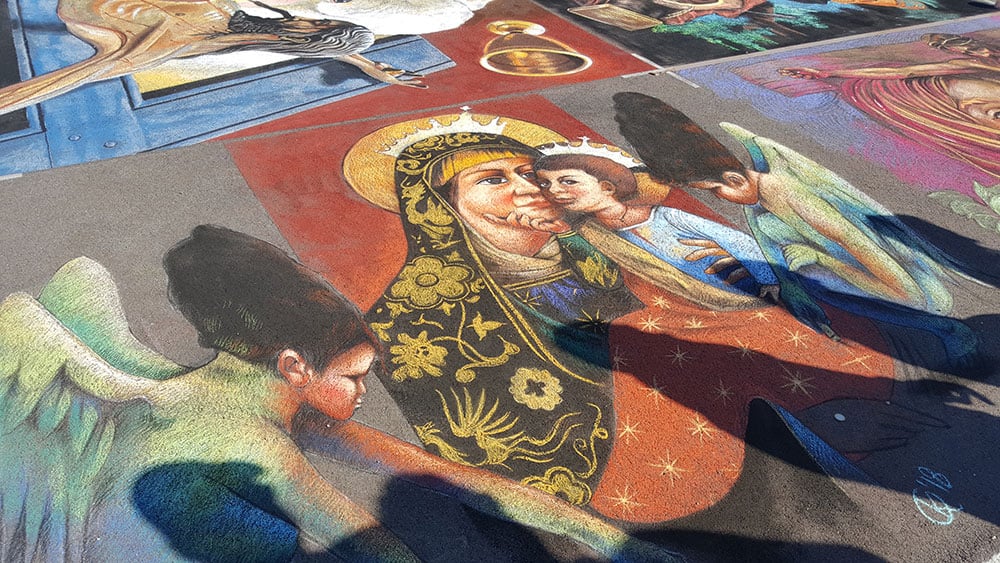
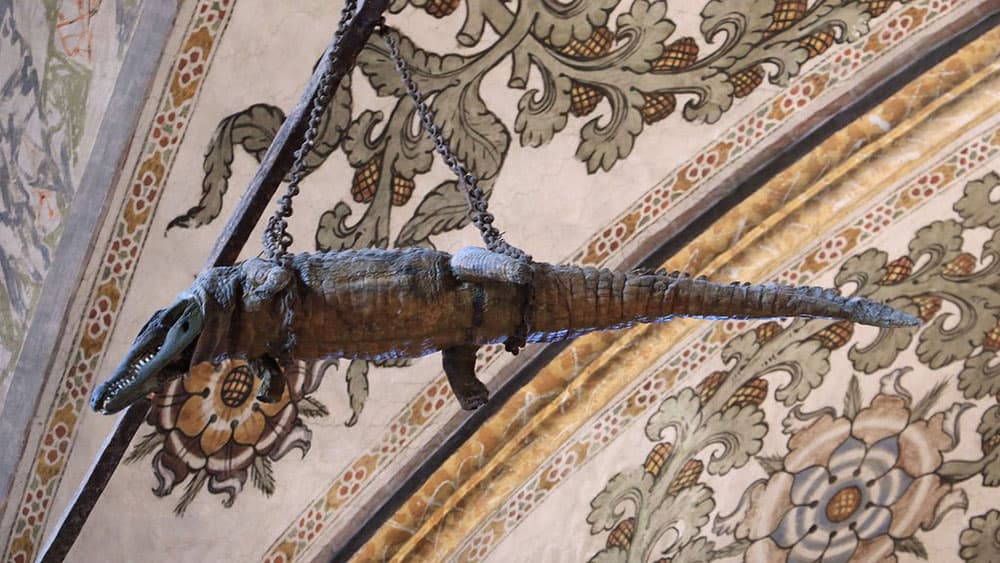
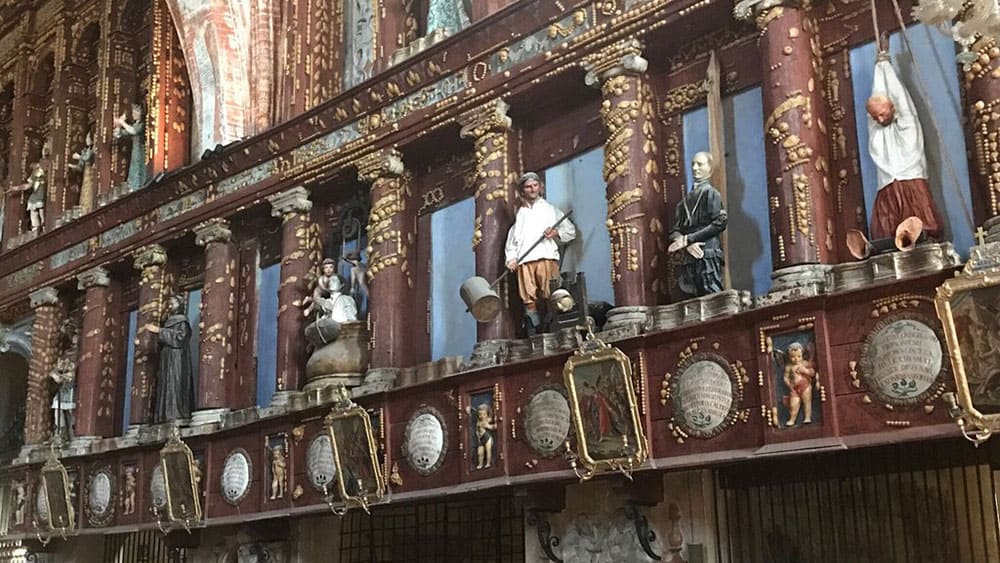
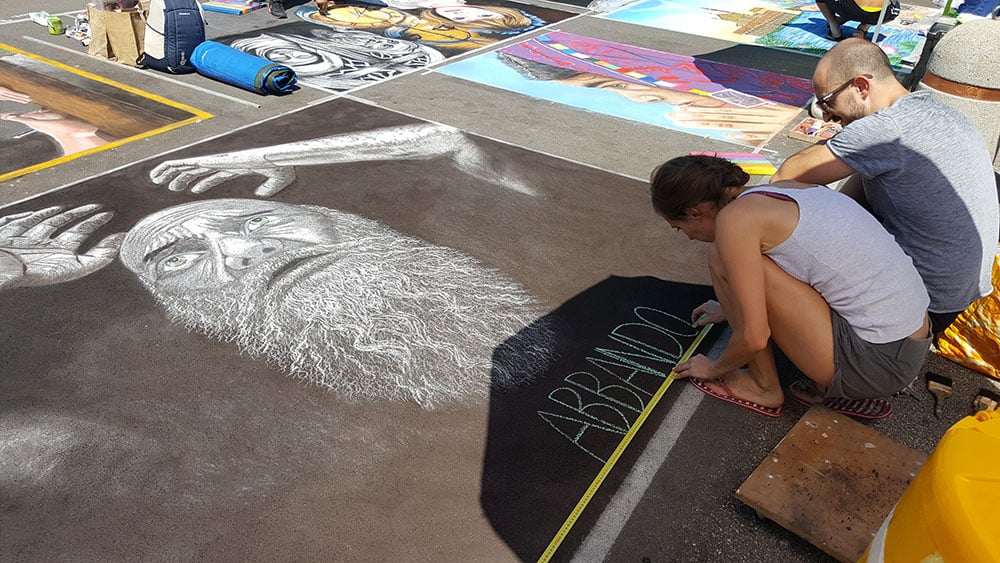
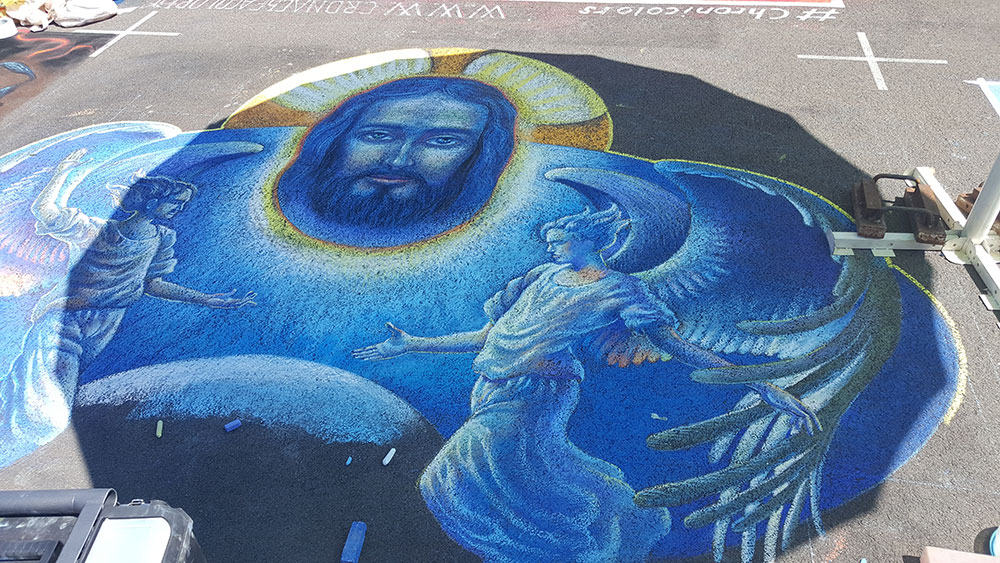
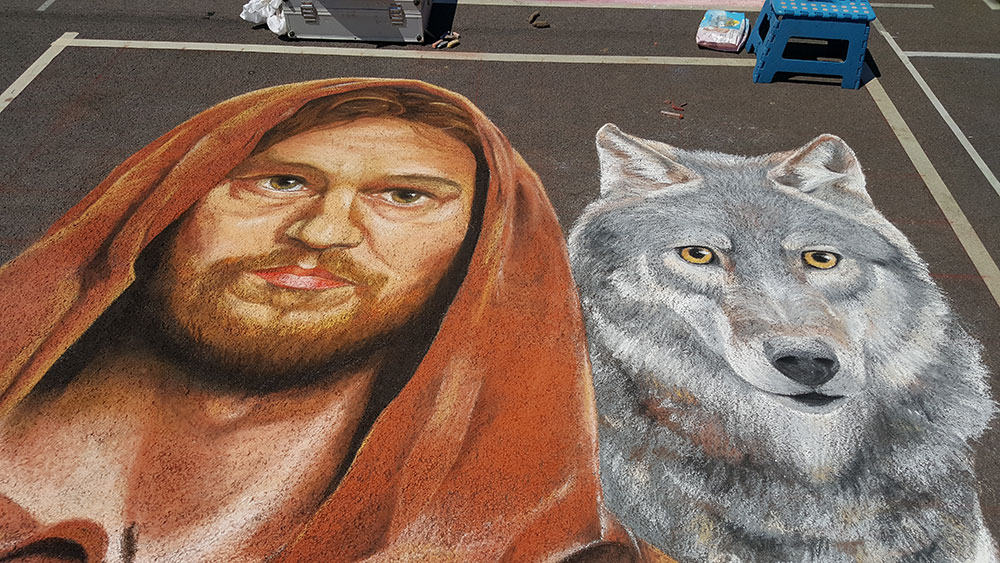
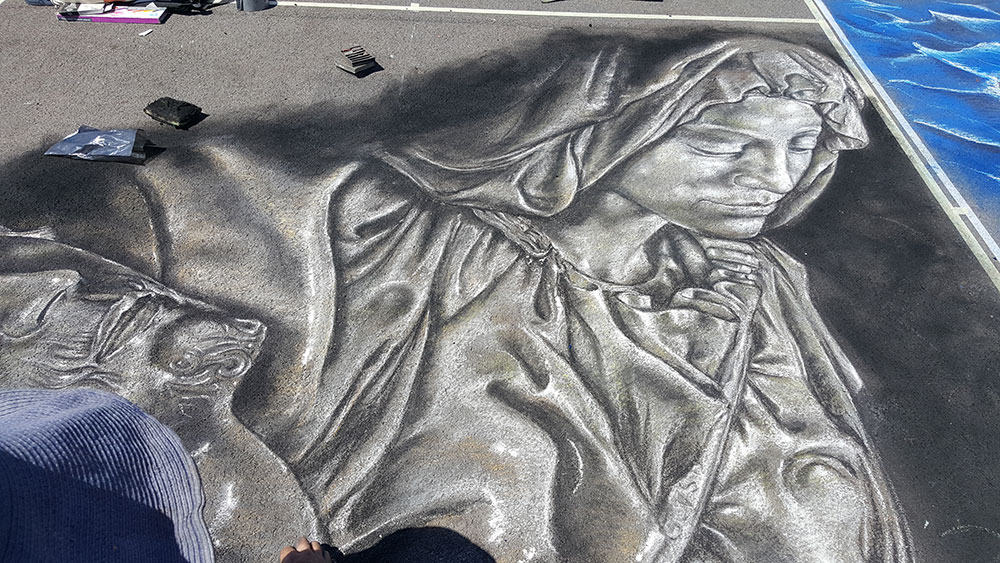
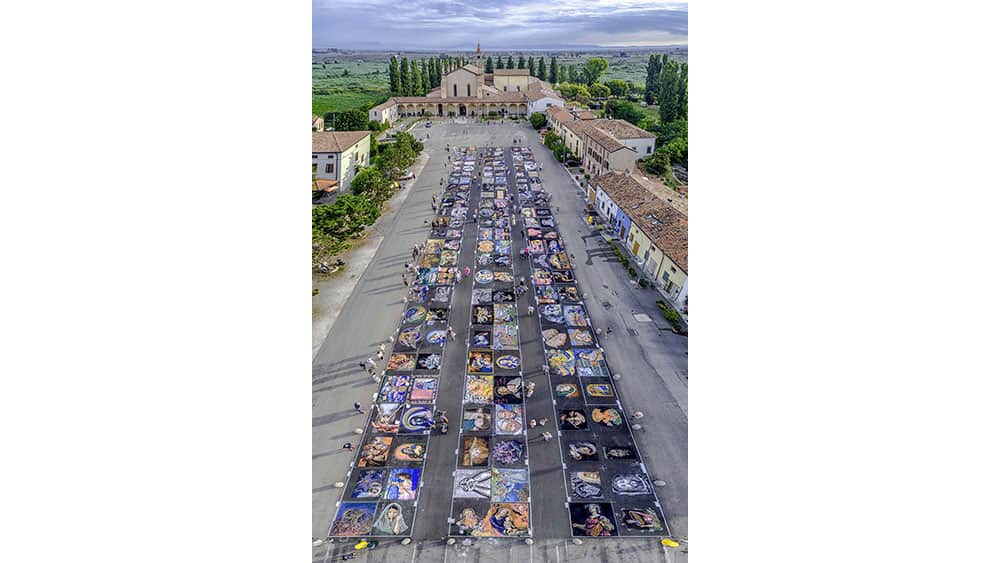
2 Comments
Anna Rounseville
June 28, 2019Nazim, and Betti,
This post is so Good! I never have heard of this band of artists, and the lotus flower season coincides with the festival, sounds just so perfect. Do people carry parasols to protect them from too much sun? Or are there alcoves of shade where the lotus flowers are viewed? Just curious.
Which saint was pictured having been sort of strung up? Did he get rescued? Or is that how he met his demise?
The crocodile 🐊 reminders to avoid temptation are a nice touch. Wow, so much I’ve not seen yet. Keep doing such incredible work, so nice that your friend gave you the photos to share and the idea, the arial photo was a good capture also. And to think of it, Chalk. People’s creativity is boundless it seems.
Ciao!
Sincerely, Anna
casachiesi
July 28, 2019Happy you liked it Anna! Sorry for the late reply but we have been swamped lately!